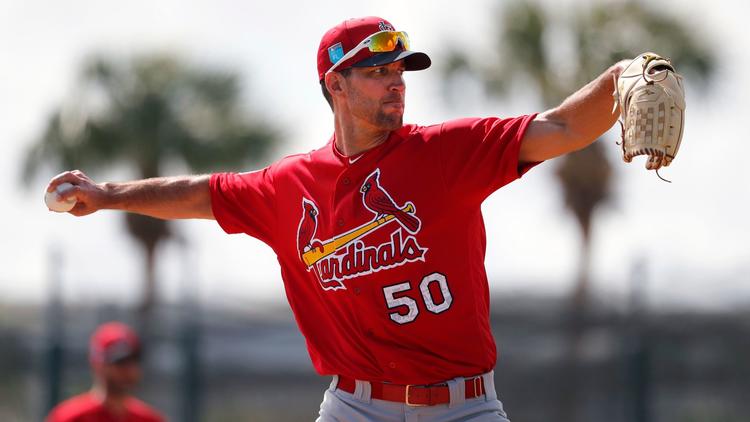
By Tom Liberman |
An interesting situation arose here in baseball land, St. Louis, when the local ballclub decided to activate longtime ace Adam Wainwright just in time to start the opening day game while sending future ace Jack Flaherty down to the farm team. A lot of people here in town think it was the wrong move and it brings up an interesting debate about perceived and real value.
Let’s examine the obvious value of a young, strong pitcher like Flaherty as compared to an aging and injured pitcher like Wainwright. The perceived value strongly favors Flaherty. He is younger, hasn’t been injured, is coming off an excellent first start and a fine Spring Training. Wainwright has been spotty in ability and oft injured the last few years. There is no question that a cursory examination of value indicates the Cardinals made the wrong move.
There is certainly the element of experience to consider in the question. Wainwright is familiar with the pressure and expectations of Opening Day whereas Flaherty is not and such might influence his performance. I think that is a legitimate consideration but I’d like to put it aside for a moment. There is a greater value to starting Wainwright beyond simple experience.
Wainwright has spent his entire career here in St. Louis and to do so sacrificed more money at various points. Early on the Cardinals paid Wainwright considerably more than the wages mandated by Major League Baseball. Basically, players who have less than a certain amount of experience are not eligible to negotiate for whatever contract they desire. There is a fixed pay scale for such players. In Wainwright’s rookie season he was used in the closer role and secured the final out in all three postseason series in which the Cardinals won the World Series.
After this he became an ace starter and the team paid him more than was required. Down the road, when Wainwright could have signed more lucrative contracts as a free agent, he chose to stay with the Cardinals, for considerable money to be sure, but less than his market value would indicate.
What’s my point in all of this? By once again rewarding Wainwright when it was not necessary, or even apparently prudent, the Cardinals create an environment that is noted by other players. Flaherty himself would like to have a career similar to Wainwright’s. When he sees the Cardinals rewarding a veteran who has perhaps seen better days, Flaherty might very well say to himself, ‘Hey, that could be me one day. This is a team that cares.’
Not only does Flaherty see this but so do all the players, not only within the system but in other places as well. The Cardinals treat players with respect and that sort of behavior has a hidden value that is not particularly easy to assess.
When an employer shows loyalty to an employee and gives rewards for services past it might not be justified by current performance but there is value there nonetheless. Hidden value to be certain.
Was activating and starting Wainwright the right decision? I think so. Even after his performance was not so great.
Tom Liberman is a writer from St. Louis, Mo., and enjoys spending his time with his great family and wonderful friends. He’s written a number of Sword and Sorcery fantasy novels.